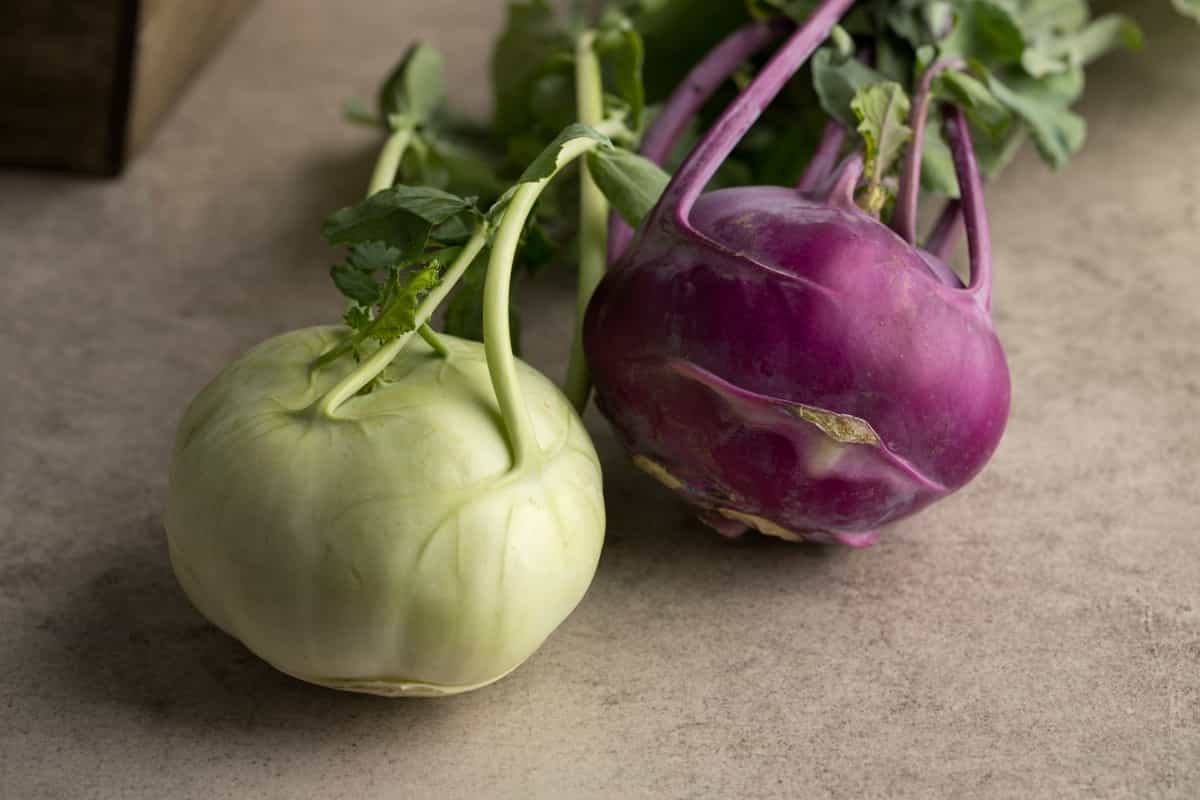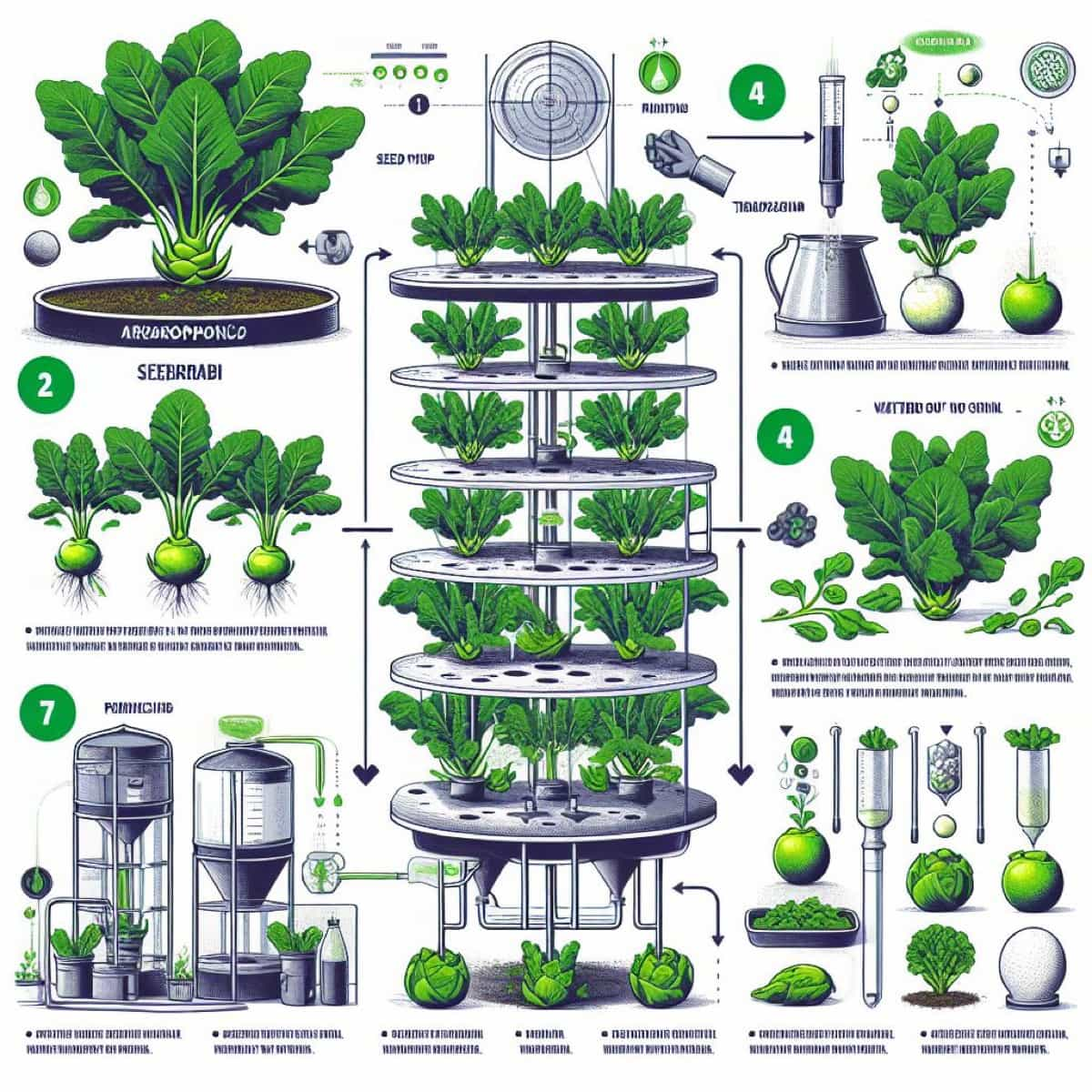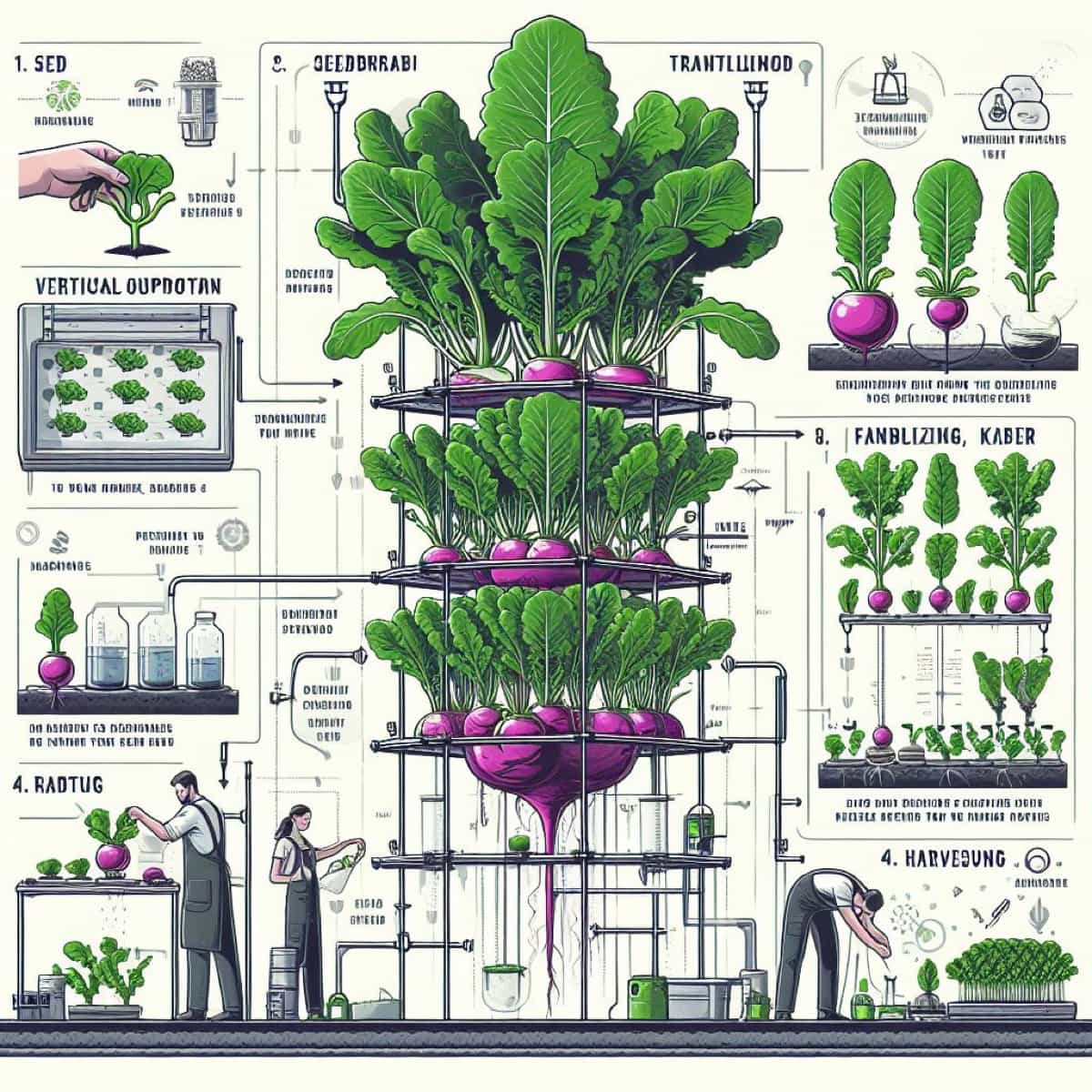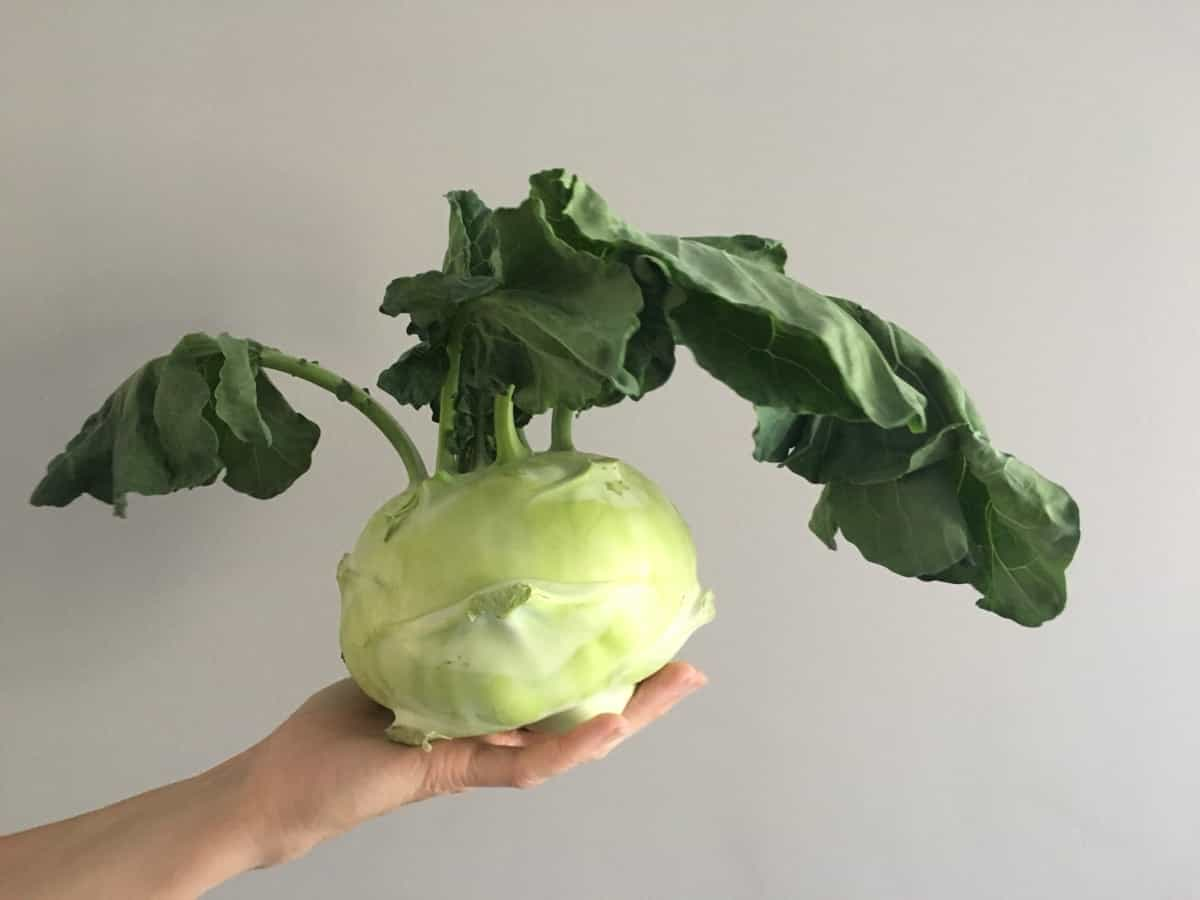Gardening has evolved with the advent of aeroponic towers, offering an innovative way to grow vegetables like kohlrabi. This article explores how to grow kohlrabi on aeroponic towers, particularly focusing on indoor tower gardens. Aeroponic towers are space-efficient and resource-friendly, making them well-suited for urban environments. This guide will provide insights on choosing suitable kohlrabi varieties for aeroponic towers and effectively managing key factors such as air circulation and airflow to ensure optimal growth.

How to Grow Kohlrabi on Aeroponic Towers
Selecting the Right Kohlrabi Varieties for Aeroponic Towers
When it comes to growing kohlrabi on aeroponic towers, selecting the right variety is crucial. Several types of kohlrabi thrive in aeroponic systems. The Purple Vienna and White Vienna are popular for their flavor and fast growth. Similarly, the Giant Prague variety is known for its large bulbs and hearty texture.
Another excellent choice is the Grand Duke, which offers a good balance of size and taste. Every variety possesses distinctive traits, and the selection process hinges on your personal taste preferences and the specific conditions within your aeroponic tower garden. Consider factors like growth rate and bulb size when making your selection, as these will impact how well the plants fit within the tower’s structure.
Setting Up the Aeroponic Tower System
Setting up the aeroponic tower system is the first step in your journey to grow kohlrabi. Begin by selecting an appropriate site for the tower, ideally indoors, to enable precise control over environmental conditions. Assemble the tower according to the manufacturer’s instructions, ensuring all parts are securely fitted.
In case you missed it: 10 Common Problems With Kohlrabi Plants: Treatment and Solutions

The system must encompass a nutrient solution reservoir, a circulation pump, and designated planting areas. It’s essential to ensure that the system is stable and level to prevent any issues with water distribution. After assembling, test the system to ensure everything works correctly, paying particular attention to the misters or nozzles that deliver the nutrient solution to the roots of your plants.
Preparing the Seeds for Germination
Preparing kohlrabi seeds for germination in an aeroponic tower involves a few key steps. Start by selecting high-quality seeds, as this significantly affects the success of your plants. Soak the seeds in water for a few hours to expedite germination. Following the soaking process, arrange the seeds on a moist paper towel or within a germination tray.
Ensure the environment is warm and moist to encourage germination. It typically takes a few days for kohlrabi seeds to sprout. Once they’ve sprouted, they are ready to be transferred to the aeroponic tower. It’s important to handle the sprouts gently to avoid damaging the delicate roots.
Planting and Spacing Kohlrabi Seeds in the Tower
After germination, planting and spacing kohlrabi seeds correctly in the aeroponic tower is essential. Transfer the sprouted seeds to the tower, placing them in the growing medium provided. Distribute the seeds or seedlings uniformly to provide adequate space for individual plant growth, minimizing competition for nutrients and sunlight.
In case you missed it: Frequently Asked Questions About Growing Kohlrabi from Seed to Harvest

Proper spacing is crucial as it affects air circulation and the plant’s ability to absorb nutrients efficiently. Ensure the roots are in contact with the nutrient solution while the upper part of the plant remains above the growing medium. Regularly check the placement of the plants, especially in the early stages, to ensure they are growing correctly.
Monitoring and Adjusting Nutrient Levels
Monitoring and adjusting nutrient levels is vital for the healthy growth of kohlrabi in an aeroponic tower. The nutrient solution should provide all the essential minerals and elements needed for growth. Regularly check the pH and nutrient concentration of the solution. Kohlrabi plants typically thrive in a slightly acidic solution with a pH of around 6.0 to 6.5.
Adjust the pH if necessary using pH up or down solutions. Additionally, it is essential to periodically refresh and replace the nutrient solution to maintain a steady nutrient supply for the plants. Observing the plant’s growth and health can help you determine if the nutrient levels are adequate or need adjustment.
Controlling Temperature and Humidity
Maintaining precise temperature and humidity levels in the aeroponic tower’s environment is essential for successful kohlrabi cultivation. Kohlrabi thrives within a specific temperature range, typically between 18°C to 24°C. If the temperature exceeds this range, it could hinder the growth of the plants or even damage them.
Similarly, maintain a moderate humidity level in the room, as too much humidity can promote fungal growth, while too little can dry out the plants. Use a thermometer and a hygrometer to monitor these conditions regularly, and adjust the room’s environment using heaters, air conditioners, or humidifiers as needed.
Managing Air Circulation and Airflow
Proper air circulation and airflow are essential in an aeroponic tower garden, especially when growing kohlrabi indoors. Effective air circulation is crucial for disease prevention and ensuring plants receive an ample carbon dioxide supply for photosynthesis. Use fans to maintain airflow around the tower.
However, ensure the fans are not too strong, as they can dry out the plants or cause damage. Regularly check and clean the aeroponic system’s filters to ensure efficient air circulation. By managing these factors effectively, you can create an optimal environment for your kohlrabi plants to thrive in the aeroponic tower.
Pest and Disease Management in Aeroponic Towers
One advantage of aeroponic systems is the reduced risk of soil-borne diseases. Nevertheless, it is crucial to remain watchful for potential issues, including aphid and spider mite infestations, as well as the development of powdery mildew. Regularly inspect your kohlrabi plants for signs of pests and diseases. If you detect any, address them promptly using appropriate methods.
For pests, organic insecticidal soaps or neem oil can be effective. To manage fungal infections, prioritize adequate ventilation and contemplate the use of natural fungicidal solutions. It’s also important to maintain cleanliness around the aeroponic system to prevent the attraction of pests and the spread of diseases.
Harvesting Kohlrabi
Harvesting kohlrabi at the right time is crucial for the best flavor and texture. Kohlrabi is typically ready to harvest when its bulb reaches about the size of a tennis ball. To harvest, gently twist and pull the bulb from the growing medium. Be careful not to disturb the roots of nearby plants. After harvesting, remove any remaining leaves and stems to keep the aeroponic tower clean. Kohlrabi can be stored in a cool, dry place for later use. Consistent harvesting also stimulates increased plant production, optimizing the yield generated by the aeroponic tower.
In case you missed it: A Step-by-Step Guide for Growing Kohlrabi Microgreens: DIY in Simple Way from Seeds in Containers

Maintaining and Troubleshooting the Aeroponic Tower System
Regular maintenance and troubleshooting are key to the successful operation of your aeroponic tower. Check the system periodically for any signs of wear or malfunction, such as leaks or clogged nozzles. Ensure the pump and timer are functioning correctly, as these are crucial for delivering nutrients and water to the plants.
Ensure the system’s cleanliness, which involves cleaning the reservoir and filters, in order to deter the accumulation of algae and mineral deposits. If you encounter any problems, refer to the manufacturer’s guidelines or seek advice from experienced aeroponic gardeners. Proper maintenance ensures that your aeroponic tower remains an efficient and productive environment for growing kohlrabi.
Conclusion
Growing kohlrabi on aeroponic towers is a rewarding endeavor that combines modern agricultural technology with efficient use of space. Through meticulous variety selection, precise system setup, and effective growth environment management, you can achieve a plentiful harvest of freshly grown kohlrabi. Remember to stay vigilant about pests and diseases, harvest your crops at the right time, and conduct regular maintenance and troubleshooting of your aeroponic tower system.
- Feed Your Flock for Less: Top 10 Tips to Save on Chicken Feed
- Ultimate Guide to Ossabaw Island Hog: Breeding, Raising, Diet, and Care
- Hatching Answers: The Top 10 Reasons Your Chickens Aren’t Laying Eggs
- Eggs and Economics: Breaking Down the Cost of Raising Backyard Chickens
- Defend Your Greens: Proven Methods to Keep Iguanas Out of Your Garden
- Ultimate Guide to Cinnamon Queen Chicken: A Comprehensive Guide for Beginners
- Ultimate Guide to California Tan Chicken: Breeding, Raising, Diet, Egg-Production and Care
- Ultimate Guide to Marsh Daisy Chicken: Breeding, Raising, Diet, and Care
- 10 Types of Chicken Farming Businesses You Can Start for Profits